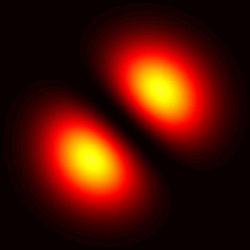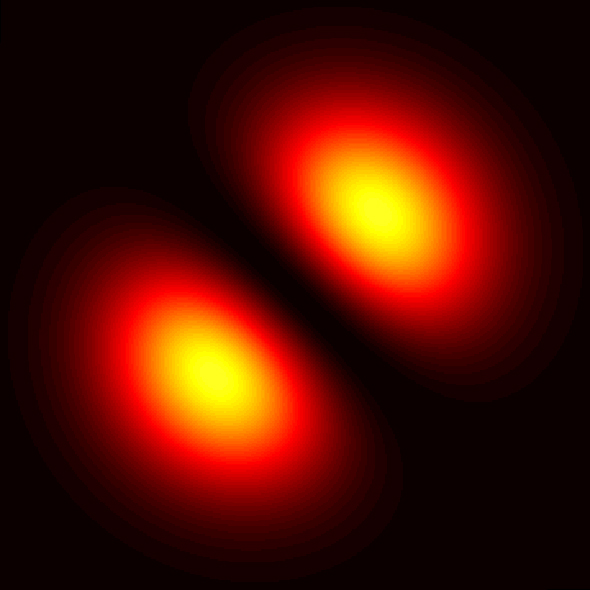Squeezed into Darkness
According to quantum mechanics, empty space teems with random electromagnetic oscillations that limit the precision of optical measurements. Schemes to “squeeze” light and dodge this quantum limit require a carefully-tuned light intensity and other conditions. In the 23 May Physical Review Letters, Spanish researchers propose an alternative squeezing strategy that should be less finicky. If it proves experimentally feasible, the technique could permit improved measurements of gravitational waves or more practical ways to transmit quantum information.
Physicists often describe quantum-mechanical precision limits using the Heisenberg uncertainty principle, which places strict limits on how well quantities can be measured, even with perfect equipment. But this rule limits the combined uncertainty of pairs of related quantities, like the position and momentum of a particle. Researchers are free to measure the particle’s position exactly, as long as they abandon any knowledge of its momentum, or vice versa.
A similar tradeoff applies to light waves, which have an intrinsic variability reflecting their quantum nature. Beginning in the 1980s, researchers learned how to experimentally “squeeze” light, for example, to precisely determine the light wave’s amplitude at the expense of its phase, the number that measures the wave’s progress through its oscillating cycle. But Germán de Valcárcel, of the University of Valencia in Spain, says that squeezing is significant only when the light intensity is chosen carefully. In his team’s new technique the intensity of the input light “need not be tuned in order to obtain, ideally, perfectly squeezed light,” he says.
To generate squeezed light, physicists typically shine laser light into an optical cavity, where it bounces back and forth between two partially transparent mirrors. The cavity contains a “nonlinear” crystal that converts the light into squeezed light of a new color with twice the wavelength. To optimize the effect, the input light must be carefully tuned to have intensity at or near a specific value called the threshold.
De Valcárcel and his colleagues propose using an input intensity well above the threshold and adjusting the mirror spacing so that the new light emerges with an intensity pattern in the shape of a dumbbell: with the beam coming toward you, you might see bright regions above and below, for example, with a dark lane horizontally across the middle. The critical ingredient, says de Valcárcel, is “symmetry breaking”: the pattern is free to emerge with any orientation angle. “This angle is arbitrary,” he says, so over time the pattern will rotate randomly.
Although the light “chooses” a particular orientation for the dumbbell pattern, or mode, the cavity also allows a second mode, which is identical but rotated by 90 degrees around the beam axis with respect to the first one. The researchers calculate that the completely unknown orientation of the first mode results in perfect precision for one aspect of the second, “dark” mode. Specifically, a component of this mode, the light signal that is exactly a quarter-cycle delayed from the bright mode, should be precisely zero–lacking even the usual quantum-mechanical fluctuations of empty space. Researchers could mix this “super-dark” mode with another laser to make a low-noise beam for precise measurements, such as detecting the tiny motions caused by gravitational waves.
Julio Gea-Banacloche, of the University of Arkansas in Fayetteville, is intrigued by the theoretical intuition that leads to the surprising new result. But he cautions that experimentalists usually avoid working above threshold because any noise reduction in one mode is hard to measure in the presence of very bright and noisy light in the other mode.
–Don Monroe
Don Monroe is a freelance science writer in Murray Hill, New Jersey.
More Information
Demonstration of a tenfold reduction in noise power using traditional squeezing techniques: H. Vahlbruch et al., “Observation of Squeezed Light with 10-dB Quantum-Noise Reduction,” Phys. Rev. Lett. 100, 033602 (2008).





